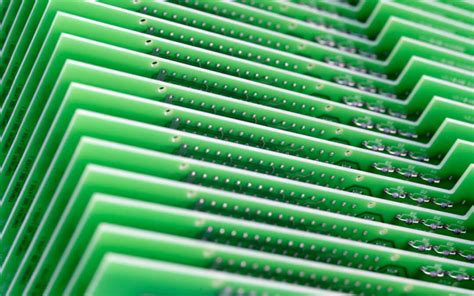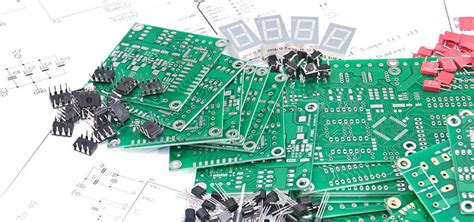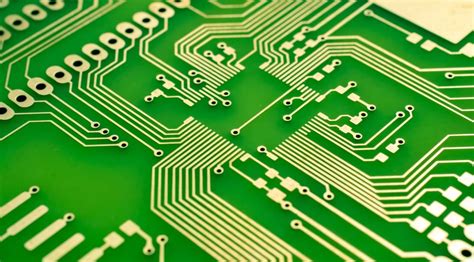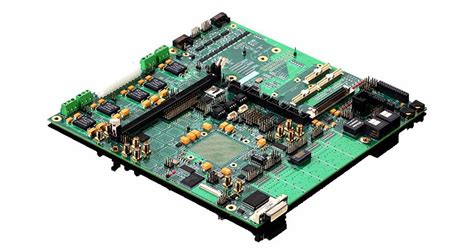4 pcb capabilities
Advanced Manufacturing Techniques in 4PCB Production
In the realm of printed circuit board (PCB) production, the capabilities of 4PCB, or four-layer printed circuit boards, have become increasingly significant due to their advanced manufacturing techniques. These techniques not only enhance the functionality and reliability of electronic devices but also cater to the growing demand for miniaturization and complexity in modern electronics. As we delve into the advanced manufacturing techniques employed in 4PCB production, it is essential to understand how these methods contribute to the overall efficiency and performance of electronic systems.
To begin with, one of the most notable advancements in 4PCB manufacturing is the use of high-density interconnect (HDI) technology.
HDI technology allows for the creation of more compact and efficient circuit boards by utilizing microvias, blind vias, and buried vias. These features enable the interconnection of multiple layers within the PCB, thereby increasing the board’s density without compromising its size. Consequently, HDI technology facilitates the integration of more components and functions into a smaller area, which is particularly beneficial for applications requiring compact and lightweight designs, such as smartphones and wearable devices.
In addition to HDI technology, the implementation of advanced materials plays a crucial role in enhancing the capabilities of 4PCBs.
The use of high-performance substrates, such as polyimide and ceramic-filled laminates, provides superior thermal and electrical properties. These materials are essential for maintaining the integrity and performance of the PCB under extreme conditions, such as high temperatures and frequencies. Moreover, the incorporation of advanced copper foils with improved conductivity and adhesion properties further enhances the electrical performance of 4PCBs, ensuring reliable signal transmission and reduced power loss.
Another critical aspect of advanced manufacturing techniques in 4PCB production is the precision and accuracy achieved through state-of-the-art fabrication processes.
Laser drilling, for instance, allows for the creation of extremely small and precise vias, which are essential for the high-density interconnections required in modern PCBs. Additionally, the use of automated optical inspection (AOI) systems ensures that each layer of the PCB is meticulously examined for defects, thereby guaranteeing the quality and reliability of the final product. These processes, combined with advanced computer-aided design (CAD) software, enable manufacturers to produce highly complex and intricate PCB designs with remarkable precision.
Furthermore, the adoption of environmentally friendly practices in 4PCB manufacturing has gained prominence in recent years.
Techniques such as lead-free soldering and the use of halogen-free laminates not only comply with stringent environmental regulations but also contribute to the sustainability of the electronics industry. By minimizing the use of hazardous materials and reducing waste, these practices ensure that the production of 4PCBs aligns with global efforts to promote environmental responsibility.
In conclusion, the advanced manufacturing techniques employed in 4PCB production have significantly expanded the capabilities of these circuit boards, making them indispensable in the development of modern electronic devices. Through the integration of HDI technology, advanced materials, precision fabrication processes, and environmentally friendly practices, 4PCBs offer enhanced performance, reliability, and sustainability. As the demand for more sophisticated and compact electronic solutions continues to grow, the role of advanced manufacturing techniques in 4PCB production will undoubtedly remain pivotal in shaping the future of the electronics industry.
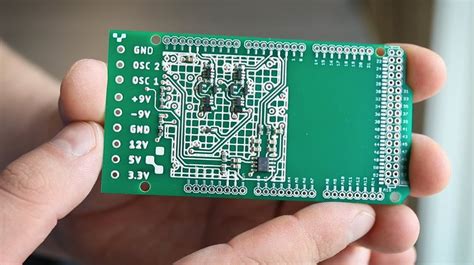
Innovative Design Solutions with 4PCB Technology
In the rapidly evolving landscape of electronics manufacturing, the demand for innovative design solutions has never been more critical. Among the myriad of technologies available, 4PCB, or four-layer printed circuit board technology, stands out as a pivotal advancement. This technology offers a multitude of capabilities that cater to the increasingly complex requirements of modern electronic devices. As we delve into the capabilities of 4PCB technology, it becomes evident that its role in facilitating sophisticated design solutions is indispensable.
To begin with, 4PCB technology provides enhanced electrical performance, which is crucial for high-speed and high-frequency applications.
The additional layers in a 4PCB allow for more intricate routing of electrical signals, thereby reducing the risk of interference and signal loss. This is particularly beneficial in applications where signal integrity is paramount, such as in telecommunications and computing devices. By minimizing crosstalk and electromagnetic interference, 4PCB technology ensures that devices operate with greater efficiency and reliability.
Moreover, the increased layer count in 4PCB technology allows for greater design flexibility.
Designers can allocate specific layers for power and ground planes, which helps in reducing noise and improving the overall performance of the circuit. This separation of layers also facilitates better thermal management, as heat can be dissipated more effectively across the board. Consequently, devices that incorporate 4PCB technology can achieve higher performance levels without compromising on thermal stability, making them ideal for use in demanding environments.
In addition to electrical performance and design flexibility, 4PCB technology also offers significant advantages in terms of miniaturization.
As electronic devices continue to shrink in size, the need for compact and efficient circuit designs becomes increasingly important. The multi-layer structure of 4PCB allows for more components to be integrated into a smaller footprint, enabling the development of compact devices without sacrificing functionality. This capability is particularly advantageous in the consumer electronics sector, where the demand for smaller, more powerful devices is ever-growing.
Furthermore, the use of 4PCB technology can lead to cost savings in the manufacturing process.
While the initial design and fabrication of multi-layer boards may be more complex, the ability to integrate more functions into a single board can reduce the need for additional components and interconnections. This not only simplifies assembly but also reduces the overall material costs. Additionally, the improved reliability and performance of 4PCB-based devices can lead to lower maintenance and repair costs over the product’s lifecycle.
As we consider the broader implications of 4PCB technology, it is clear that its capabilities extend beyond individual device performance.
The adoption of 4PCB technology can drive innovation across various industries, from automotive to aerospace, by enabling the development of more advanced and efficient electronic systems. As designers and manufacturers continue to explore the potential of 4PCB technology, we can expect to see a new wave of electronic devices that push the boundaries of what is possible.
In conclusion, 4PCB technology represents a significant advancement in the field of electronics design and manufacturing. Its capabilities in enhancing electrical performance, providing design flexibility, enabling miniaturization, and reducing costs make it an invaluable tool for developing innovative design solutions. As the demand for more sophisticated electronic devices continues to grow, the role of 4PCB technology in shaping the future of electronics cannot be overstated.
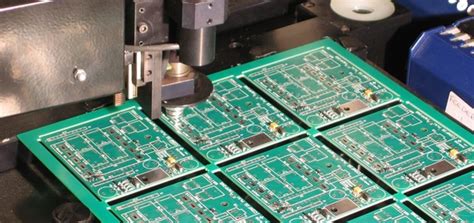
Quality Assurance and Testing in 4PCB Fabrication
In the realm of printed circuit board (PCB) fabrication, quality assurance and testing are pivotal components that ensure the reliability and functionality of the final product. The capabilities of 4PCB, a leading name in the industry, are particularly noteworthy in this regard. As the demand for more complex and high-performance PCBs continues to rise, the importance of rigorous quality assurance processes cannot be overstated. These processes are designed to identify and rectify potential issues before they can impact the performance of the electronic devices in which these PCBs are used.
To begin with, 4PCB employs a comprehensive approach to quality assurance that encompasses every stage of the fabrication process.
This begins with the careful selection of raw materials, which are sourced from reputable suppliers to ensure consistency and reliability. By using high-quality materials, 4PCB lays a solid foundation for the subsequent manufacturing processes. Furthermore, the company utilizes advanced equipment and technology to maintain precision and accuracy throughout the production cycle. This technological prowess is complemented by a team of skilled professionals who oversee the operations, ensuring that each step adheres to stringent quality standards.
Transitioning to the testing phase, 4PCB implements a variety of testing methodologies to verify the integrity and performance of their PCBs.
One of the primary testing techniques employed is Automated Optical Inspection (AOI), which is used to detect defects such as misalignments, shorts, and opens in the circuitry. AOI systems utilize high-resolution cameras and sophisticated algorithms to perform a thorough examination of the PCBs, providing a non-invasive means of quality control. In addition to AOI, 4PCB also conducts Electrical Testing (ET) to ensure that the electrical pathways on the board function as intended. This involves applying a series of electrical signals to the PCB and measuring the responses to identify any discrepancies.
Moreover, 4PCB recognizes the importance of environmental testing, particularly for PCBs that will be used in harsh or demanding conditions.
To this end, they conduct thermal cycling tests to assess the board’s ability to withstand temperature fluctuations. This is crucial for applications in industries such as aerospace and automotive, where PCBs are often exposed to extreme temperatures. Additionally, humidity testing is performed to evaluate the board’s resistance to moisture, which can be a significant factor in the degradation of electronic components.
In conjunction with these testing procedures, 4PCB places a strong emphasis on continuous improvement and feedback.
By analyzing the results of their quality assurance and testing processes, they are able to identify areas for enhancement and implement corrective actions. This commitment to excellence is further reinforced by their adherence to international quality standards, such as ISO 9001, which provides a framework for consistent quality management practices.
In conclusion, the capabilities of 4PCB in quality assurance and testing are a testament to their dedication to delivering high-quality PCBs that meet the diverse needs of their clients. Through a combination of advanced technology, skilled personnel, and rigorous testing protocols, 4PCB ensures that their products not only meet but exceed industry standards. As the demand for reliable and efficient PCBs continues to grow, 4PCB remains at the forefront of innovation and quality in the field of PCB fabrication.

Sustainable Practices in 4PCB Manufacturing
In recent years, the electronics industry has increasingly focused on sustainability, and the printed circuit board (PCB) manufacturing sector is no exception. As a critical component of electronic devices, PCBs are essential to modern technology, yet their production can have significant environmental impacts. Consequently, manufacturers are adopting sustainable practices to mitigate these effects, and 4PCB manufacturing is at the forefront of this movement. By integrating eco-friendly materials, optimizing production processes, and implementing waste reduction strategies, 4PCB manufacturers are making strides toward a more sustainable future.
To begin with, the choice of materials plays a crucial role in the sustainability of PCB manufacturing.
Traditional PCBs often rely on materials that are not environmentally friendly, such as lead-based solders and halogenated flame retardants. However, 4PCB manufacturers are increasingly turning to alternative materials that are less harmful to the environment. For instance, lead-free solders, which use tin, silver, and copper alloys, are becoming more prevalent. These materials not only reduce the environmental impact but also comply with regulations such as the Restriction of Hazardous Substances (RoHS) directive, which limits the use of certain hazardous substances in electronic equipment.
In addition to material selection, optimizing production processes is another key aspect of sustainable 4PCB manufacturing.
Energy consumption is a significant concern in PCB production, as it involves several energy-intensive steps, including drilling, plating, and etching. To address this, manufacturers are investing in energy-efficient equipment and technologies. For example, the use of laser drilling instead of mechanical drilling can significantly reduce energy usage. Moreover, implementing advanced process control systems allows manufacturers to monitor and optimize energy consumption throughout the production process, further enhancing efficiency.
Furthermore, water usage is another critical area where 4PCB manufacturers are making improvements.
PCB production requires substantial amounts of water, particularly in the cleaning and rinsing stages. To minimize water consumption, manufacturers are adopting closed-loop water systems that recycle and reuse water within the facility. This not only conserves water resources but also reduces the discharge of wastewater, which can contain harmful chemicals. By treating and reusing water, manufacturers can significantly decrease their environmental footprint.
Waste reduction is also a vital component of sustainable 4PCB manufacturing.
The production process generates various types of waste, including scrap materials, chemical by-products, and packaging waste. To tackle this issue, manufacturers are implementing comprehensive waste management strategies. For instance, recycling programs are being established to recover valuable materials from scrap PCBs, such as copper and gold. Additionally, manufacturers are exploring ways to reduce chemical waste by optimizing chemical usage and substituting less harmful alternatives where possible.
Moreover, the adoption of sustainable practices in 4PCB manufacturing is not only beneficial for the environment but also offers economic advantages.
By reducing energy and water consumption, manufacturers can lower operational costs. Similarly, waste reduction efforts can lead to cost savings through material recovery and decreased disposal expenses. These economic incentives, coupled with growing consumer demand for environmentally responsible products, are driving the industry toward more sustainable practices.
In conclusion, sustainable practices in 4PCB manufacturing are essential for reducing the environmental impact of electronic devices. By focusing on eco-friendly materials, optimizing production processes, and implementing waste reduction strategies, manufacturers are making significant progress toward sustainability. As the industry continues to evolve, these efforts will play a crucial role in shaping a more sustainable future for electronics manufacturing.

